Hot chamber die casting advantages include high production efficiency, high quality and precision molding, low porosity and so on.
Hot chamber die casting is an efficient and high-precision casting process that achieves rapid cycle production through a built-in furnace and immersion injection system. It is particularly suitable for the manufacture of small and complex parts made of low-melting-point alloys such as zinc and magnesium. Its core advantages lie in speed, precision and cost-effectiveness, but its material applicability is limited.
Hot Chamber Die Casting has several significant advantages that make it the preferred manufacturing process in many industries. Here is a detailed description of its main advantages:
- High production efficiency
- High quality and precision molding
- Low Porosity
- Long mold life
- Suitable for low melting point alloys
- Low energy consumption
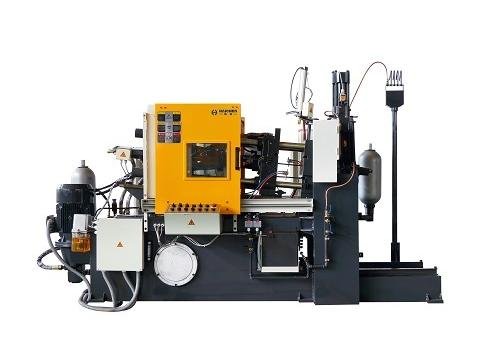
High production efficiency
The hot chamber die casting process is capable of fast cycle times, typically producing hundreds of castings per hour. This high efficiency makes it very suitable for large-scale production needs. For example, the production speed of medium-sized zinc alloy components is typically 400 to 1000 per hour, while the production speed of small aluminum, magnesium and plastic components can even reach 3500 per hour.
In addition, the high degree of automation of hot chamber die casting machines further improves production efficiency.
Fast Cycle Times and Continuous Production
In hot chamber die casting, the molten metal is constantly contained in a furnace inside the machine (known as a “gooseneck” system), eliminating the need for separate pours of molten metal for each cycle, as is required with cold-chamber die casting. This significantly shortens production cycles, enabling near-continuous production.
A stark comparison: Cold-chamber die casting machines average 50 to 90 cycles per hour, while hot-chamber die casting machines can reach 400 to 900 cycles per hour, representing an approximately eightfold increase in efficiency.
Highly automated and streamlined processes
The hot chamber die casting process is simple in structure and easily automated, reducing manual intervention.
For example: Metal is injected directly through the built-in system, eliminating the need for an external furnace or metal transfer steps.
Equipment Technology Optimization Increases Speed
- High-Speed Injection Control: Dry injection speeds >5m/s, combined with an electric proportional valve to precisely control flow and pressure, ensures fast and stable metal filling.
- Stable Clamping Structure: Reinforced ductile iron mold plates and high-strength chrome-plated tie rods reduce vibration and flash, ensuring stability at high speeds.
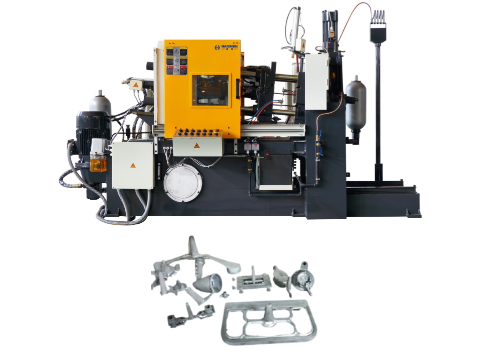
High quality and precision molding
Hot chamber die casting is able to produce parts with high precision and good surface quality. Due to the high-pressure injection system, the molten metal is able to evenly fill all details of the mold, ensuring that the parts have tight tolerances and smooth surfaces. This high precision makes it particularly suitable for the production of small parts that require intricate details and thin-walled structures.
High Precision and Tight Tolerances
Hot chamber die casting can produce complex parts with precise dimensions and tight tolerances. Molds are constructed from hardened steel or alloys, and precision machining techniques are used to create complex cavities, ensuring high part consistency.
Excellent Surface Quality
High-pressure injection ensures uniform metal filling of the mold, resulting in a smooth surface and minimal burrs and defects. Parts typically achieve a high-quality finish without the need for post-processing.
Process stability and consistency
Molten metal is kept constantly warm in a closed system (avoiding repeated melting), minimizing oxidation and composition fluctuations, ensuring batch-to-batch consistency.

Low Porosity
During the hot chamber die casting process, molten metal is injected into the mold under high pressure, which reduces porosity, thereby improving the mechanical properties and surface quality of the part. Low porosity not only improves the durability of the part, but also reduces the need for subsequent processing.
Closed metal treatment
The molten metal circulates inside the die casting machine and is injected into the mold through a closed channel (such as a gooseneck), which reduces the inclusion of oxides and gases, thereby reducing porosity.
Vacuum Operation
Hot chamber die casting can be easily performed under vacuum, further minimizing the risk of porosity.
Material compatibility
Hot chamber die casting is often used for metals with low melting points (such as zinc, tin, and lead alloys). These materials have good fluidity in the molten state, are easy to fill the mold, and reduce porosity.

HAICHEN hot chamber die casting advantage cases
HAICHEN machines provide these hot chamber die casting advantages for real-world manufacturing.
- Case Study: Zinc Alloy Medals and Awards
- Case Study: Durable Zinc Alloy Door Handles
- Case Study: Precision Zinc Alloy Pipe Fittings
Zinc Alloy Medals and Awards
A customer produces sports medals. They need high detail and a good surface finish. HAICHEN’s hot chamber machine makes this easy. The zinc alloy fills fine lines and textures perfectly. After that, the medals need very little polishing. This saves time and cost.
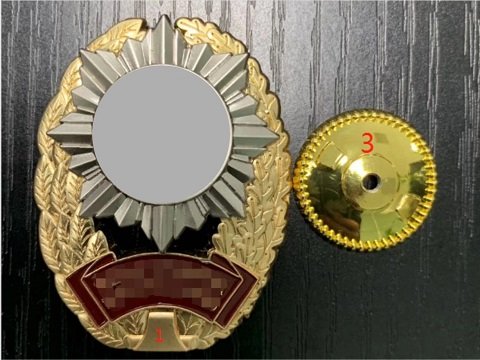
Case Study: Durable Zinc Alloy Door Handles
A hardware maker uses our machine for door handles. The fast cycle allows high-volume production. Moreover, the process creates strong parts with a smooth surface. Therefore, the handles are both functional and look good with minimal finishing.
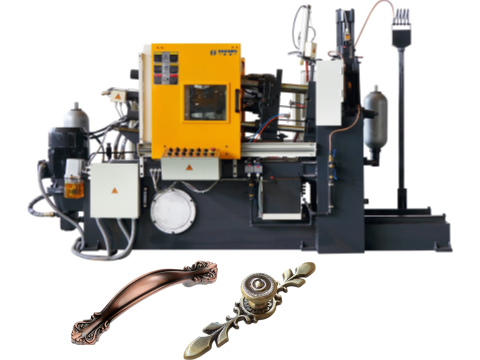
Case Study: Precision Zinc Alloy Pipe Fittings
For zinc alloy pipe couping parts, dimensions must be exact. HAICHEN’s precise control in the hot chamber process ensures this. The fittings have consistent wall thickness and strong threads. This reliability makes the method ideal for industrial components.
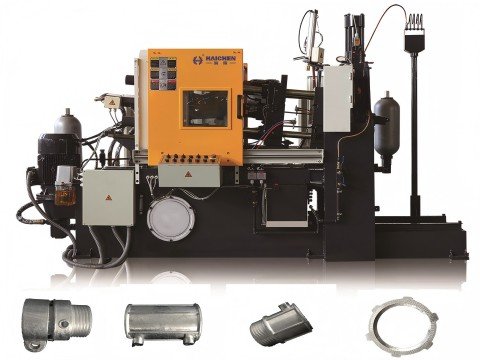
For suitable applications, the advantages of hot-chamber die casting are evident. It delivers unrivalled speed, exceptional detail reproduction, and cost-effective production for zinc components. Haichen employs this technology to assist manufacturers in efficiently producing high-quality medals, hardware fittings, and components. When your project involves high-volume zinc parts, the hot-chamber die casting process is typically the most productive and reliable choice.
Low energy consumption
Since the metal remains molten in the hot chamber, less energy is required to heat it. This not only reduces production costs but also reduces energy consumption.
Continuous Molten Metal Heat Reduction Reduces Energy Consumption
The core advantage of hot chamber die casting is that the molten metal is always kept in an insulated chamber inside the machine, eliminating the need to reheat the metal with each cycle, as is the case with cold chamber die casting.
Efficient production processes reduce unit energy consumption
The rapid cycle time of hot chamber die casting (referred to as high-speed production) indirectly reduces energy consumption per unit of product:
Equipment Technology Optimization Improves Energy Efficiency
The new hot chamber die-casting machine further reduces energy consumption through technological improvements.
The equipment utilizes a low-noise hydraulic pump and proportional valve control, achieving both improved performance and reduced energy consumption.

Long mold life
The hot chamber die casting machine has a built-in furnace that can continuously supply molten metal, reducing the time the mold is in direct contact with the hot metal, thereby extending the life of the mold.
Low melting temperature reduces thermal stress
Hot chamber die casting is only suitable for low-melting-point alloys (such as zinc, magnesium, and lead). It is noted that high-melting-point metals will corrode equipment and accelerate die wear.
The Role of an Efficient Cooling System
The mold cooling system evenly distributes heat, reducing thermal stress, preventing cracking, and extending mold life.
Process characteristics reduce mechanical damage
Die-casting molds are inherently highly durable and can withstand high temperatures and pressures.

Other hot chamber die casting advantages
Suitable for low melting point alloys
Hot chamber die casting is particularly suitable for low melting point alloys such as zinc, magnesium, and lead. These alloys melt at relatively low temperatures, so hot chamber die casting can effectively process these materials.
Reduced material waste
During the hot chamber die casting process, the metal remains molten in the mold, reducing material waste.
Suitable for complex shapes
Hot chamber die casting is able to produce parts with complex shapes and details, such as automotive parts, electronic components and small parts in household appliances.
Cost-effectiveness
Although the cost of hot chamber die casting equipment and molds is higher, the overall production cost is still low due to its high production efficiency and low material waste.
Hot chamber die casting is widely used in many industries due to its high production efficiency, high quality, low porosity, low energy consumption, long die life and suitability for low melting point alloys.
Haichen die casting machine
Haichen is one Chinese die casting machine manufacturer for more than 10years. We produce both high pressure cold chamber die casting machine and hot chamber die casting machine. They have durable and highly precise features.
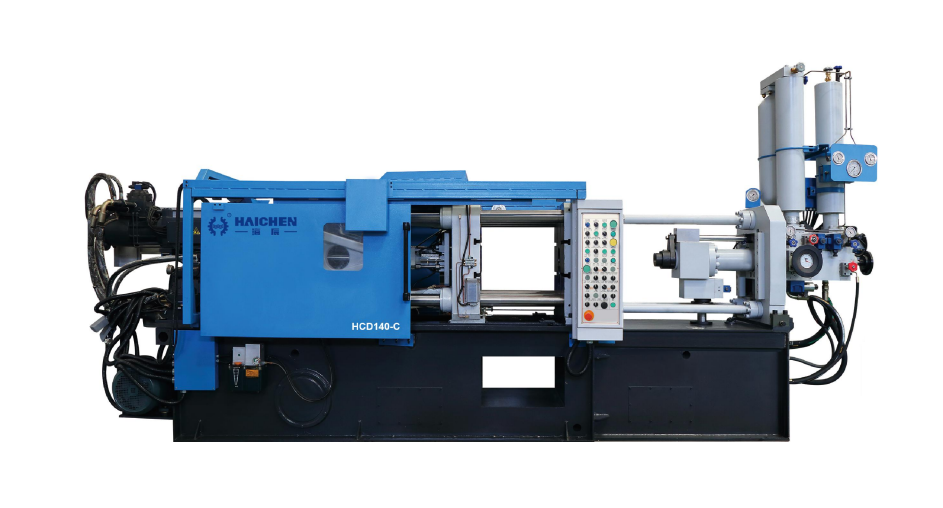
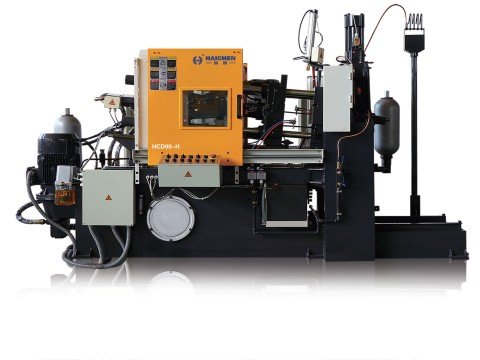
Haichen also produce die casting machine auxiliary equipment. Such as conveyor, vacuum machine, mold temperature controller, industrial robot, sprayer and so on.
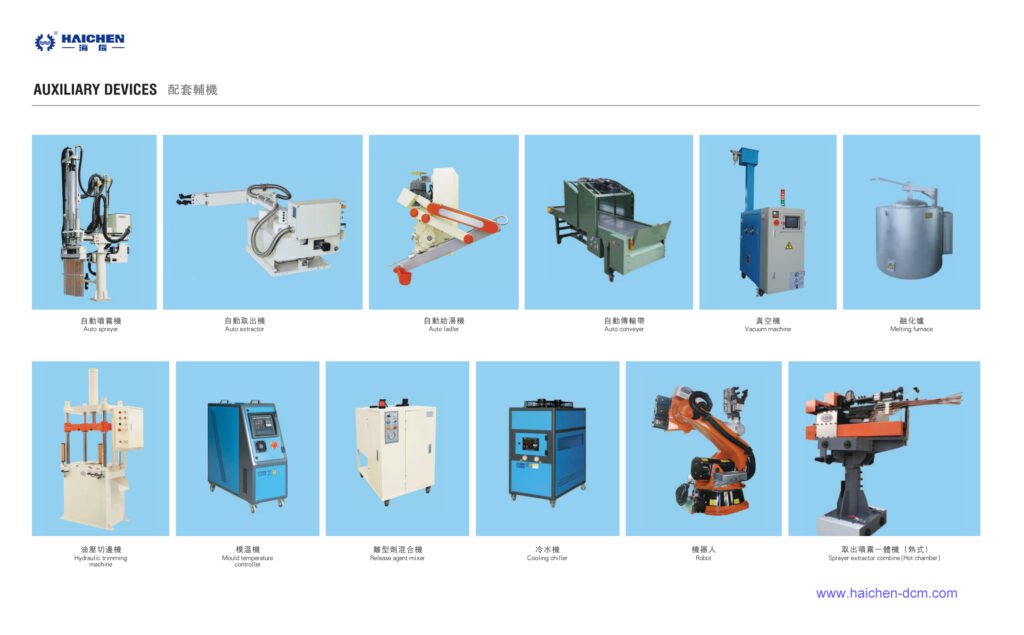
We supply cold chamber and hot chamber die casting machine spare parts.
Welcome contact us.



